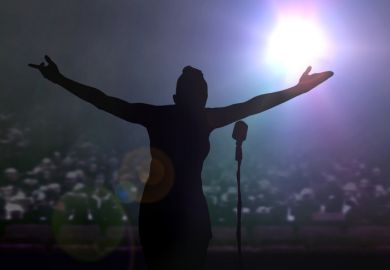Although offering a wealth of observations - just reward for what is a long read - Randall Collins's overall theory is neat: violence is not easy, hence relatively rare. It is a compelling argument.
Not only does Collins's "law of small numbers" and its implications appear robust - for most of the time people are not violent and, when they are, they are more likely to be incompetent than effective - but his thesis also serves to demythologise violence. Violence is a practical situational accomplishment: contingent, emergent and processual. There are no natural-born or socially determined killers, only people acting violently when the situation is "right". And lest we are inclined to glamorise the violent elite, Collins is at pains to argue that they are simply practised. There is no mystery - they excel because they dedicate themselves to the mundane aspects of doing violence. All in all, it is a prosaic and welcome image. Indeed, as Collins successfully argues, violence is aborted more often than carried through. Bluster and bluff are the norm, and violence almost always the exception.
So what of the exception? Again Collins does not short-change his reader with his core idea: the build-up to violence is such that it generates a typically disabling tension and fear. Whatever the situation, people mostly shy from confrontation and therefore violence, preferring instead the mutual emotional entrainment of normal interaction. For violence to happen, people have to find ways of countering the paralysing emotion they would normally experience: attacking the weak is the usual strategy.
This sounds self-evident, but the point of Collins's argument is to show how this works in reality: thus we learn that violence, like any other social phenomenon, is a product of emotional interaction with the strong and the weak acting together to produce the "emotional energy" necessary for overcoming the anxiety normally preventing violence.
This is a clearly provocative - if not an entirely new - proposition: the idea of victim participation has a long and hotly contested criminological history, with feminists especially critical of the ways in which this leads to victim blaming and associated ideologies ranging from the innocent victim to the thoroughly questionable notion of victim pleasure.
It is also controversial with respect to the perpetrator, for although Collins denies that the joy of violence is sexual, a critique raised in relation to Joanna Bourke's work, Collins's position is nonetheless clear: aggressors get an emotional charge out of violence; indeed, they could not be violent without it.
The question is: how are we to read this emotion and is it as easily separated from the question of sex, as Collins argues? Is it as simple as claiming that there is no (sexual) joy in killing but only "expressions of pride or relief in successful performance"?
Collins is on uncertain ground here, which explains why he does not extend his theory to rape or incest (although it is questionable whether he would afford incest the status of violence, since he simply reads violence as physical force. Thus in no way does he address the complexity of violence, choosing instead to ridicule the idea of symbolic violence).
This is not simply a question of gender, but a methodological one. Reading the emotion of violence is incredibly difficult, if not impossible, for it is not just a "fog", as Collins readily admits, but at its core it is "a hermetically sealed zone".
Observation and visual evidence are hardly adequate for understanding what happens when people enter this "dark" zone and are certainly not sufficient for suggesting that there is any shared experience or interaction. Violence is not like any other social phenomenon, if social at all, and the reason why he cannot help but conclude that "we need to think truly outside the box" when thinking about violence. Ultimately Collins struggles with this imperative, but, then, thinking about violence is not easy.
Violence: A Micro-sociological Theory
By Randall Collins
Princeton University Press
584pp, £26.95
ISBN 9780691133133
Published 3 March 2008
Register to continue
Why register?
- Registration is free and only takes a moment
- Once registered, you can read 3 articles a month
- Sign up for our newsletter
Subscribe
Or subscribe for unlimited access to:
- Unlimited access to news, views, insights & reviews
- Digital editions
- Digital access to THE’s university and college rankings analysis
Already registered or a current subscriber?



